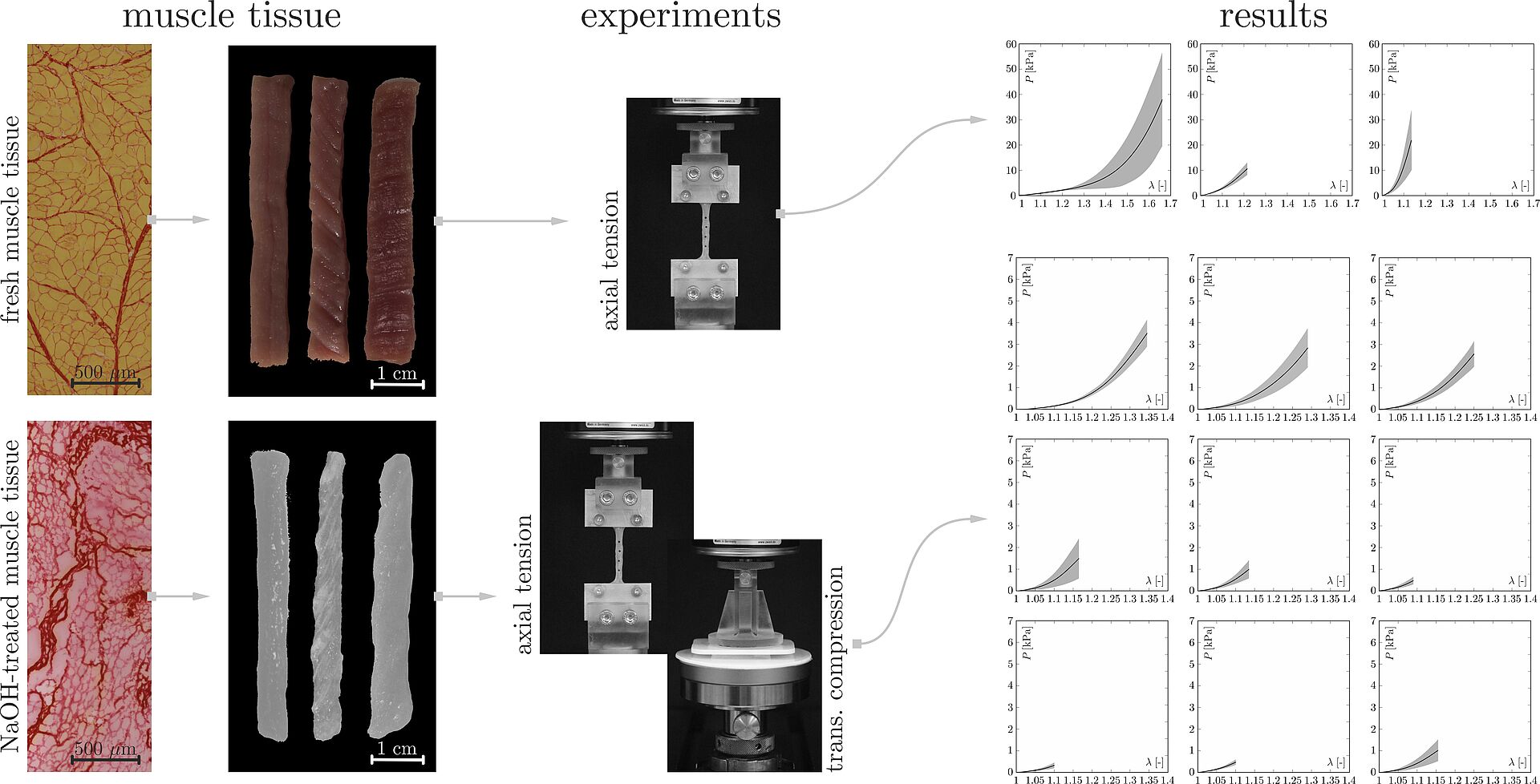This paper reports the first comprehensive data set on the anisotropic mechanical properties of isolated endo- and perimysial extracellular matrix of skeletal muscle, and presents the corresponding protocols for preparing and testing the samples. In particular, decellularisation of porcine skeletal muscle is achieved with caustic soda solution, and mechanical parameters are defined based on compressive and tensile testing in order to identify the optimal treatment time such that muscle fibres are dissolved whereas the extracellular matrix remains largely intact and mechanically functional. At around 18 hours, a time window was found and confirmed by histology, in which axial tensile experiments were performed to characterise the direction-dependent mechanical response of the extracellular matrix samples, and the effect of lateral pre-compression was studied. The typical, large variability in the experimental stress response could be largely reduced by varying a single scalar factor, which was attributed to the variation of the fraction of extracellular matrix within the tissue. While experimental results on the mechanical properties of intact muscle tissue and single muscle fibres are increasingly available in literature, there is a lack of information on the properties of the collagenous components of skeletal muscle. The present work aims at closing this gap and thus contributes to an improved understanding of the mechanics of skeletal muscle tissue and provides a missing piece of information for the development of corresponding constitutive and computational models.
S. Kohn, K. Leichsenring, R. Kuravi, A. E. Ehret, M. Böl
Direct measurement of the direction-dependent mechanical behaviour of skeletal muscle extracellular matrix
Acta Biomaterialia, in press (2021) [Link]


